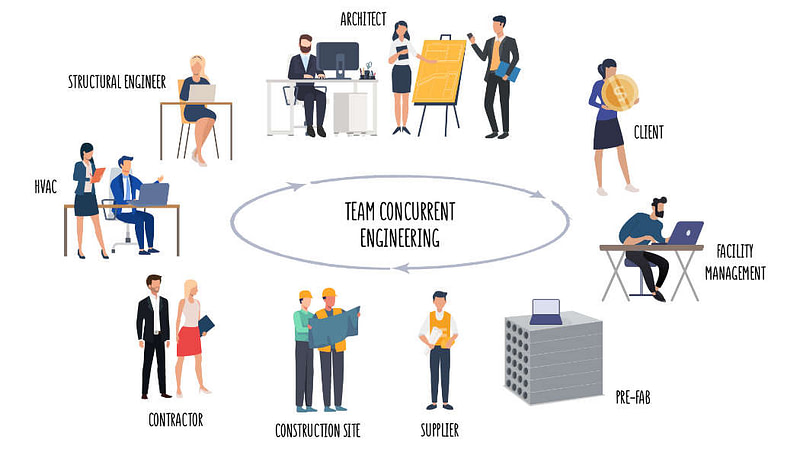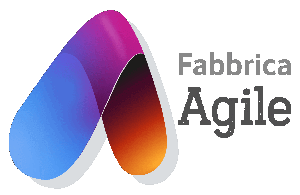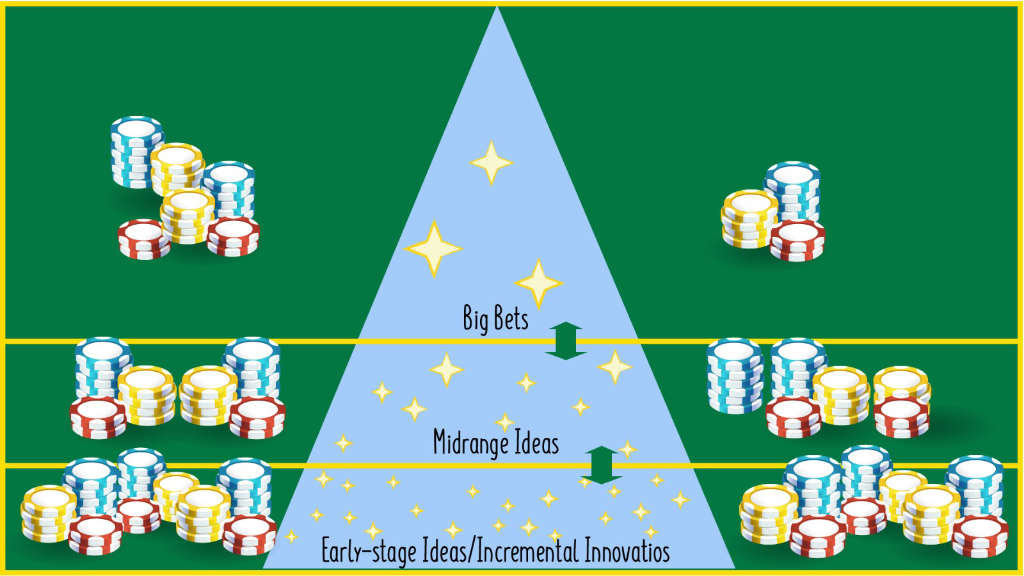I talk about the application of concurrent engineering in construction, with a focus on executive design using BIM.
The craftsmanship approach in the construction industry limits the use of executive design, preferring decisions to be made on site.
Concurrent engineering can find full adoption by combining virtual building construction with BIM and involving professionals and suppliers producing extraordinary results.
This also results in improved construction detail analysis and agile site management with reduced construction time.
Concurrent engineering in construction designs

I have been going through the Agile development of a building with the ANCE team for many months, from the initial investment idea to the delivery of the building.
We have long reasoned about the impact of development phases and activities on the overall costs of a construction.
Some of these costs are relatively fixed because they are calculated as a percentage of the selling price of the building.
With reference to the previous articles on cost-shadowing, the priorities for action are the same as for the industrial sector.
The priorities for intervention are as follows:
- Design
- Process management
- Materials purchasing organization
- Improvement of site work
Design intervention means applying the practice of concurrent design or concurrent engineering to the construction industry.
The construction world, with the exception of large construction sites, has a craftsmanship approach that involves low investment in concurrent design because of the belief that problems are solved with practical common sense on the construction site.
Concurrent design is partly carried out in the urban design phases (feasibility and final) by involving the main professionals concerned.
Its greatest effect is during executive design, which produces the drawing boards essential for physical construction.
This activity is unfortunately minimized precisely because of the craftsmanship approach that characterizes this sector, as opposed to the industrial sector where there is greater integration between design and manufacturing.
The virtual construction of the building with BIM
Executive design is then done primarily with 2D CAD not taking full advantage of the availability of the BIM tool for 3D building design.
In the industrial world, it has been my experience that the executive boards required for component construction are developed in the vast majority of cases with 3D CAD. This greatly improves the quality of geometries by more easily identifying geometric errors.
This is coupled with critical analysis of the executive boards from the perspective of construction, assembly, and procurement.
Executive design requires knowledge of the construction process, and BIM design requires knowledge of the three-dimensional CAD tool. These two skills are rarely held by one person.
If you proceed with the virtual construction of the building by having professionals, suppliers and BIM designers working as a team, playing the role of “digital builders“, the results are extraordinary.
Virtual construction proceeds at a speed that is at least 2 orders of magnitude faster than physical construction, and this allows reduced time to compare alternative technical solutions with each other and verify the correctness of geometries.
It is then necessary to structure the BIM modeling so that from a set of geometric models, a metric computation consistent with a set of workings can be produced.
From the metric statement, it is then necessary to move to a bill of materials of construction elements by associating each element or type of element with a technical lead time or “procurement lead time” .
I could see that the selection of alternative solutions has many similarities with what happens in the industrial world.
The effects of concurrent engineering on the construction site
The biggest new element, which engineers and professionals have pointed out, is the great improvement in the analysis of construction details that are usually faced on the construction site.
This makes demolitions practically absent.
For example, concrete castings can be designed so that they incorporate all the necessary components, including polystyrene inserts, which allow the necessary housings and passages to be made without resorting to minor local demolition.
We are thus approaching the construction site with a great deal of predictability of technical solutions that allows us to plan construction activities much better.
Agile site management with supplier involvement enables better integration of microactivities and material arrival.
The expected benefit is a strong reduction in construction time, which reduces the builder’s financial exposure.
In construction today, time is subjected to much dilation due to management inefficiency, which, lacking the involvement of key players during executive design, brings out all the design and management inconsistencies at the construction site.
I will return with another article on the favorable impacts of concurrent engineering and agility in site activities.




